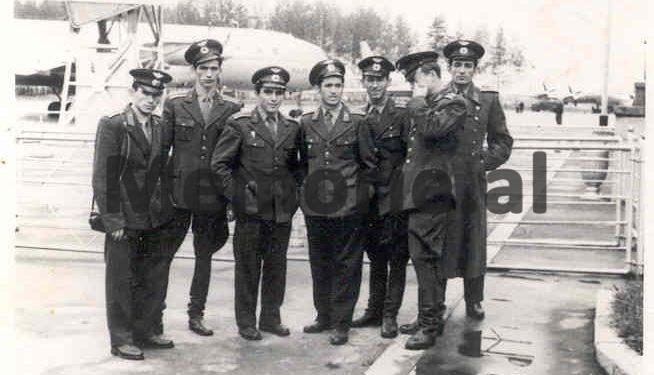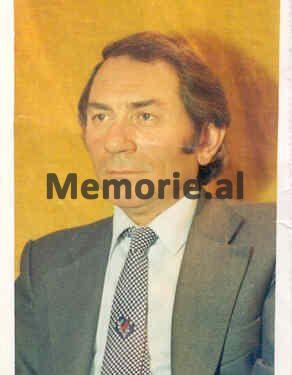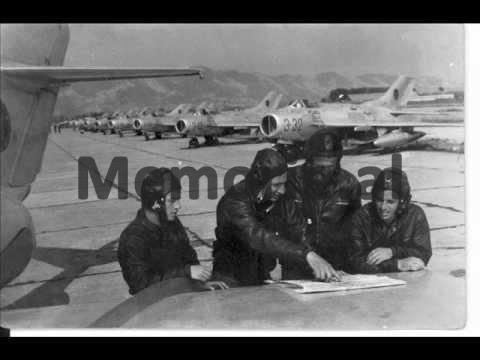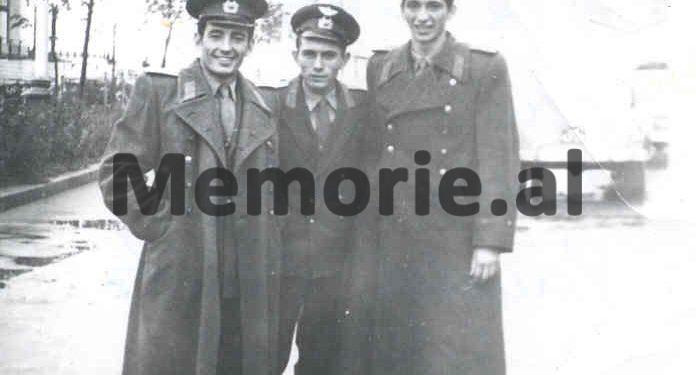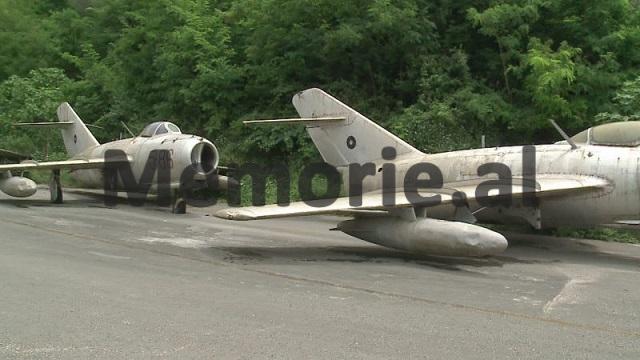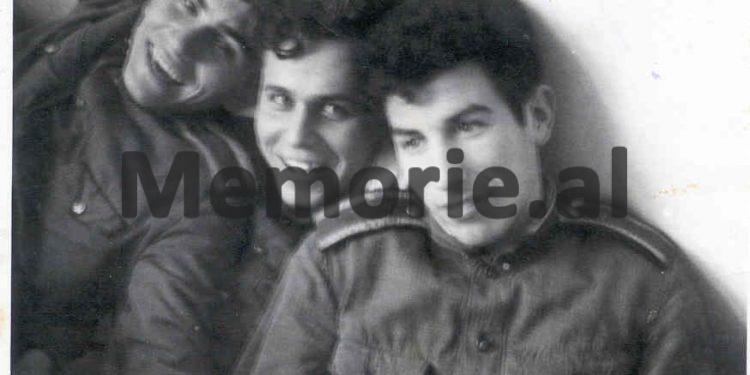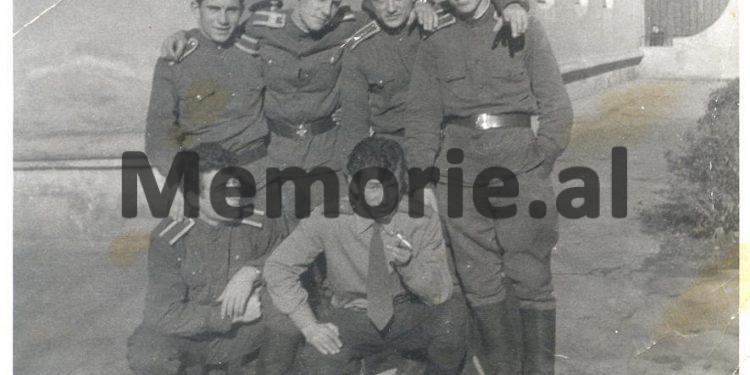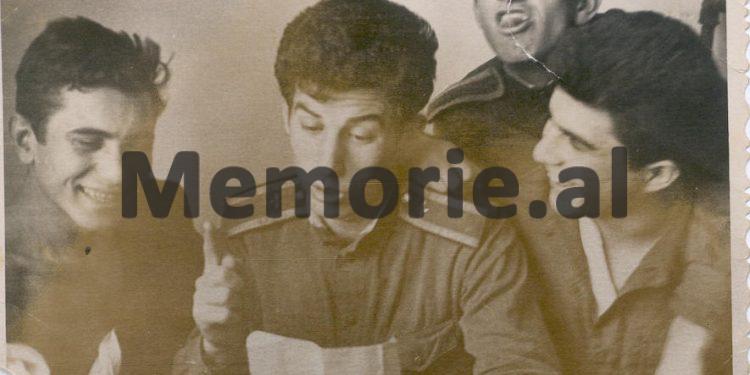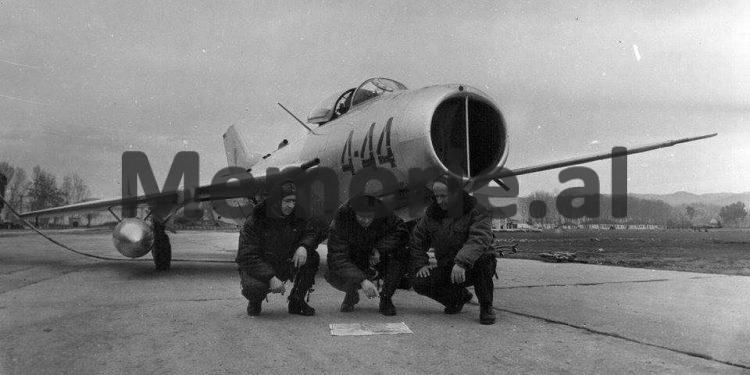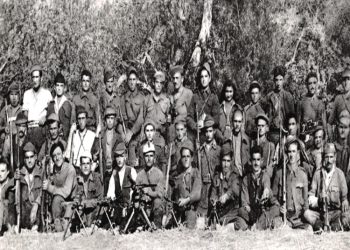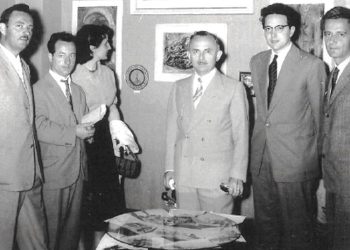Dashnor Kaloçi
Memorie.al publishes the rare testimonies of Divin Xhevit Abazi, originally from Tërbaçi in Vlora, about the unknown history of the beginning of the Albanian Combat Aviation school in the late 50s, where during training with the students of the second year course that school, there were three incidents with “Mig-15” planes, which crashed on: the coast of Seman where trainee Jovan Kacorri from Boboshtica e Korça lost his life, in the field of Lapraka near the Shkrepseve Factory where two escaped alive and unharmed the trainees, Niko Qëndro and Agim Spahiu with the “Jak-18” plane, as well as the “Mig-15” plane piloted by Petraq Qafëzezi originally from Cologne, which crashed in Kučovo, breaking into pieces, but where fortunately the pilot escaped alive by catapulting…?!
Mr. Divin, how do you remember the beginning of the first Albanian aviation school?
First of all, I wanted to explain that the course I participated in was the second course of the Aviation School, since the first course that was opened, which also marked the beginning of the Albanian Combat Aviation School, had started a year ago , that is, in September 1957. But they, after having practiced for a year with the propeller planes, had left for the Soviet Union to continue the practice with the Yak-18 planes, which were also training planes with propellers. Both the first course and the second course that opened in September 1958, where I was a part as I said, were held at the military aerodrome of Laprak. Those courses took place there, as the Combat Aviation regiment with Major Peço Polena as commander, who was a good leader and a very good man, was also located there.
How many trainees did your group consist of and what schools did they graduate from before coming there?
Our group consisted of 23 trainees and a part of us came from civilian life (general high schools, where I was a part of), while the rest from the “Skënderbej” Military High School in Tirana.
What preparations did you make at that time, in that school?
From September to the end of December, for nearly four months we underwent theoretical training, which was conducted by the relevant instructors of the Aviation Regiment commanded by Major Areteo Konomi and under the direct patronage of the Commander-in-Chief of Combat Aviation, Colonel Oedipus of Ohrid.
When did you start flying?
Immediately after the end of the theoretical course in December 1958, a few days later, i.e. at the beginning of January 1959, we started the flying practice, which we developed there at the aviation field in Laprakë.
Did you have any problems during the flying practice?
The flying practice started quite well, but after a week we had the first incident with one of our colleagues, Niko Këndron, whose plane overturned while he was taking off on the runway of Lapraka, together with Agim Spahiu, one of the instructors that were assigned to the preparation of our group.
Can you describe that incident to us more specifically?
The trainee of our group, Niko Qëndro, together with the instructor, Agim Spahiu, were taking off for flight with the Yak-18 A plane and there at the end of the runway, when their plane rose to a height of about 100 m, as a result of the temperature suddenly the engine turned off. After that, the plane lost control and, as a result, crashed one of its wings into a poplar tree located right next to the Shrekpese Factory. After that collision, the plane fell upside down to the ground and was completely destroyed. The whole horrifying scene happened not more than about 300m away from us and, as we were, we all ran to the downed plane where our two friends were.
What about the pilots…?
When we went there with one breath, we saw the plane completely destroyed, but fortunately the trainee Niko Qëndro and the instructor Agim Spahiu were alive and without any serious damage. It seemed unbelievable to us, as we thought they were dead. Even today, when so many years have passed since that event, in the entire history of Albanian Aviation it has remained as a special case and I don’t know if it has ever been repeated that the plane crashed from such a height and the two pilots escaped alive without any damage.
Were the two pilots at fault in the plane crash?
The defect that happened to them could happen to anyone and the two pilots could not be blamed. But I wanted to say that the instructor Agim Spahiu was one of the talented pilots of the Albanian aviation and I regret that years later he was removed from the aviation for reasons of biography, since he was the grandson of General Hulusi Spahiu.
What happened after that event?
After that event, the Aviation School was transferred to Kuçovo, since the field of Lapraka, where we continued training, was a residential center and presented a lot of danger if we continued flying in that area. In Kuçovo we were under the care of the commander of the aviation regiment installed there, Colonel Niko Hoxha, and two other colonels, Edip Ohri and Babaçe Faik, who had founded the Albanian Aviation. There in Kuçovo, we continued for almost a year the flight course with Yak-18 an aircraft and whoever received the maximum grade (five) earned the right to train with Mig-15 aircraft. Thus, from our entire group, 15 people won the right to train with those planes. After that, we left for the Pish-Poro field aerodrome in Vlora, where we soon continued flying with Mig-15 aircraft. There we were divided into four groups of trainees, in one of which was again the talented instructor, Agim Spahiu.
What about in Vlora, did you have incidents during the flights?
Even there, at the Pish-Poros aerodrome, we were not spared the incidents. But, unlike the first incident in the field of Lapraka, where fortunately the instructor and the trainee escaped alive, in Vlora one of our best and most talented friends lost his life. He was Jovan Kacorri from Boboshtica of Korça. Although he did not go to military school and came from civilian life, Jovani was one of the most talented trainees, having started with the most difficult piloting exercises.
After that incident, did you continue flying again?
After what happened, we went to the city of Kučova, where the funeral ceremony of Jovan Kacorri took place, and we returned to Vlora to continue training. When no more than eight days had passed since the incident with Jovan, another incident happened to us again with our colleague Petraq Qafëzezi (from Korça), who jumped with a catapult, after falling into a difficult position of his plane. Even Petraqi, like Jovan Kacorri, was flying a Mig-15 plane in the Seman area and he was catapulted somewhere near Levan. While the plane that Petraqi was flying was broken into pieces, he himself escaped without any serious injuries. At the time of the incident with Petraq, I was in the air in flight and from the control tower I was ordered to land without finishing the full training. I suspected that something was likely, but they didn’t tell me that Petraqi had fallen, so as not to start a panic. The truth of what happened to Petraq, I learned when I sat on the ground.
After that incident, which was also the third for your course, that is, with the downing of three planes, did you feel scared and did you continue training?
After that event, the relevant analyzes were made by the school leaders, and the responsibilities for everyone were drawn. But absolutely none of us trainees felt scared and we were all ready to fly. But what angered us the most was the order given by the Minister of Defense, Lieutenant General Beqir Balluku, who ordered the closure of our school.
What did you do after that order given by the Minister of Defense?
We were very upset, but after many talks we agreed to choose a representative to go to Tirana and talk to Minister Beqir Balluku about the order he had given. We wanted to talk to him so that we could be given the opportunity to continue our schooling here in Albania.
What did you talk about with Minister Beqir Balluku?
Our representation went to Tirana, but Minister Beqir Balluku did not even receive us at the meeting. He had signed the order for the closure of the Aviation School and did not consider our request for a meeting at all. It is understood that he did everything in defense of our lives, considering the three incidents that happened to us in a very short period of time. We were the first group of trainees who were supposed to finish school here in Albania, but it didn’t happen.
What happened to your course afterwards?
After the closing of the first Albanian Aviation School in the summer of 1960, we were sent to the Soviet Union, to continue there the course we left in the middle. But even there we could not finish school, because with the breakdown of relations with the Soviet Union, we returned to Albania, to start again abroad, to China.
Did you complete the course in China?
No, even there, in the distant Asian country, we could not finish the course, as after a while we were sent back to Albania. This happened after a strike that all of us, the trainees of our group, did in protest of the rather bad conditions offered to us where we were sent to attend the course. After our refusal to follow the course further, they kept us for several months waiting for the arrival of the steamer “Vlora” in the Chinese ports and then they returned us to Albania. Most of our group was kicked out of aviation altogether, and only a few were lucky enough to return to the airfield wards we had dreamed of.
The testimony of the former trainee pilot: “The fatal error with the plane that took the life of Jovan Kacori”
Regarding one of the serious incidents of the Albanian Aviation School, which happened in the summer of 1960, former student Divin Xhevit Abazi, who passed away a few years ago, recalled, among other things: “During training with the Mig-15 , which were led by our commander, Colonel Niko Hoxha, cadet Jovan Kacorri took off for a flight over the Seman River area, which was a flight area. While the training was led by Niko Hoxha, Jovan Kacorri’s instructor was Hamdi Arapi. It was a craze at the time that any trainee flying for the first time would do something more than what was required of the instructions. After flying around for 25 minutes, Kacorri wanted to make a twist (turjela) in the air with the plane (which in Russian is called “bočka”), but since the altitude was too low and the speed too high, somewhere in to the right of the city of Fier, the plane fell to the ground, breaking into pieces. That fatal mistake cost Kacorri his life. We were lined up at the airfield and saw our commander who was very concerned, as Kacorri was not responding on the radio to the commands and instructions given to him from the flight tower. There is a time limit that the plane has to stay in the air, which is related to the fuel it has stored. We saw that Kacorri’s plane ran out of fuel and was not coming back. This meant that he would never fly back. But our hope was that he might have parachuted. After that, a plane of our school took off to watch, but already in the air he was told to land again. This came after ground forces signaling equipment signaled that a plane had crashed on the outskirts of the city of Fier. After 50 minutes we found out that our colleague Jovan Kacorri had lost his life. After hearing the sad news about our colleague, a group of us, together with Commander Niko Hoxha, went to the scene. There we saw that his parachute was found about 800 m away from the place where the plane had crashed. He had not had the opportunity to land with a parachute, since, as I said, the height at which he was flying was very small and the speed of the plane was very high”./Memorie.al




